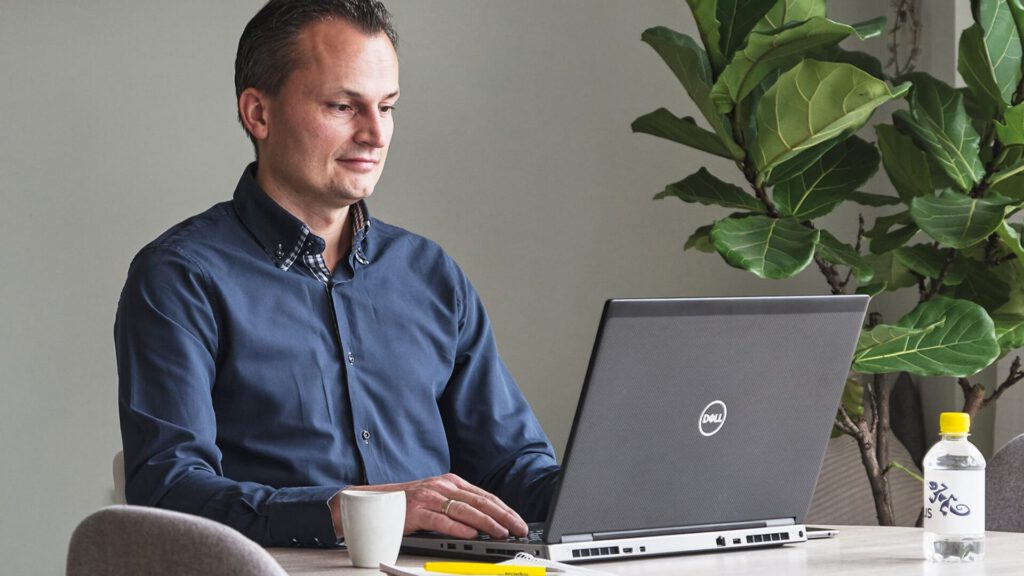Spreekuur is a digital platform with which the patient does the triage and anamnesis themselves, and a general practitioner is able to deal with care-related questions digitally (and quickly). Using Spreekuur’s website or mobile app, patients prepare for the consultation by answering questions about, amongst other things, the nature, circumstances, duration, and probable cause of the complaint. If the answers to the first questions indicate that the medical complaint is very serious, the patient is advised to call emergency services. If this is not the case, the answers to the questions are sent to the digital GP on call, who can then video call or chat with the patient. After the consultation, a summary is automatically added to the electronic health record (EHR).
Spreekuur is currently mostly used as a digital GP surgery, but more and more patients are able to use the platform with their own GPs. Meanwhile, Spreekuur was successfully implemented at GP surgery Eemland in March 2020. One month later, it was also implemented at GP surgery Rijnmond. Within five months, over 7,000 consultations were completed digitally at both GP surgeries. The corona crisis was an important accelerator in that contactless consultations became sought-after. The pilots at both GP surgeries show that Spreekuur helps triagists save time on consultations. In almost half the cases, patients end up at Spreekuur directly, without mediation from a triages. In 50% of cases, a physical consultation is even prevented. The triage and anamnesis are continuously optimised. “We saw, for example, that patients indicated a high pain score on a numerical scale, which would mean we wouldn’t always be able to help them online. That’s why we’ve developed a pain scale that can objectively indicate what a pain score means. People now indicate their pain level much more accurately,” states Inez Teunissen. Spreekuur shows that a shift from (phone) consults to digital consult can be achieved with satisfaction on both the part of the patient and the healthcare professional. Because the patient logs in through the app or website themselves and fills out the triage, the administrative burdens of the triagist and GP are lessened considerably.
For the implementation of Spreekuur, the findings from an earlier digital consultation pilotat Huisartsen Eemland were used, amongst other things. Spreekuur is integrated in Topicus GP Surgery and VIPLive, which prevents GPs from having to repeat work. About 60% of GP surgeries uses this system, which supports the scale-up of Spreekuur enormously. A healthcare professional can communicate easily with second-line care and declarations, too, are processed via the system. The questionnaires are based on the NHG-standards, the Dutch Triage Standard, and the website www.thuisarts.nl. The questionnaires were academically validated in close collaboration with The Healthcare Innovation Center (THINC.), which is part of the Universitair Medisch Centrum Utrecht (UMCU). With GP Surgery Eemland as its launching customer, Spreekuur was fine-tuned further. “The implementation trajectory is a cyclical process of continuous monitoring and adjusting.”
Within the implementation trajectory, much attention was paid to creating support amongst users and increasing the faith in the application. Each organisation works with a lead triagist who functions as a linking pin between Spreekuur’s implementation team and the triagists at the GP surgery. This way, feedback is collected in one central place, and iterations can be implemented faster. Triagists and GPs were trained in the application’s use by the implementation team. “Because of the corona crisis, GPs in the Rijnmond region had to be trained remotely. Using e-learnings and a train-the-trainer principle, we were able to scale up relatively quickly,” says Rosa Scherion. However, it sometimes remains tricky, and it takes time to have triagists fully trust the technology.

Spreekuur wants to respond to the increasing demand for primary care services and the shift from secondary to primary care. Prompted in part by the increasing workload and shortage of GPs and triagists, Spreekuur strongly believes in the possibilities that digitalisation of healthcare offers for the efficiency and effectiveness of care. Teunissen: “Our ambition is to be useable 24/7 by half of Dutch people, within five years. To do this, integration with other systems is necessary.”


